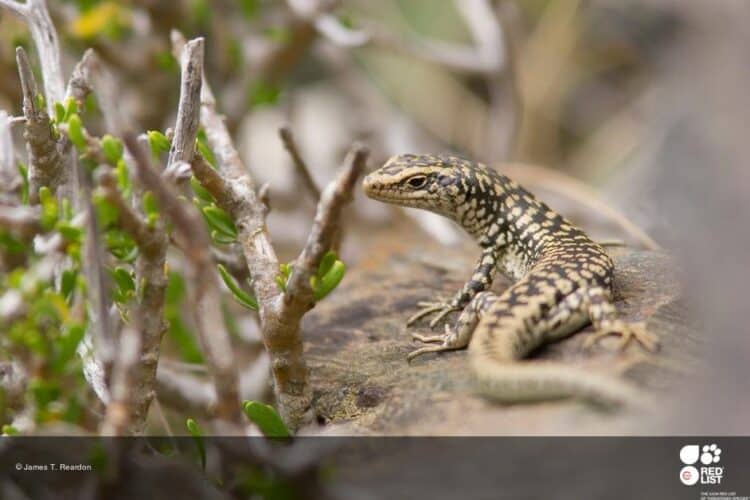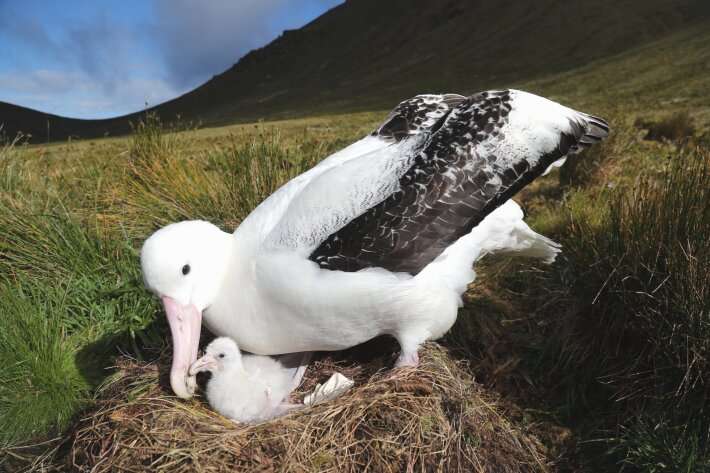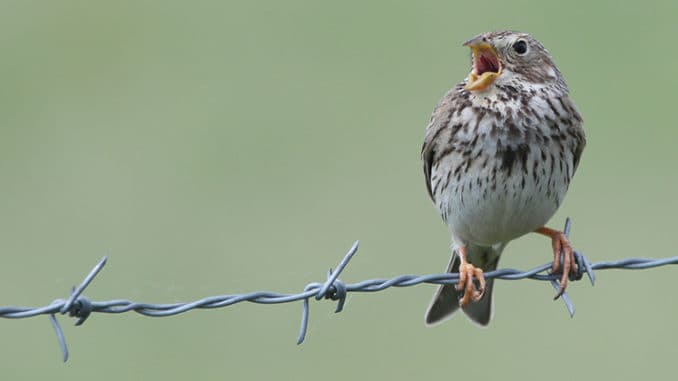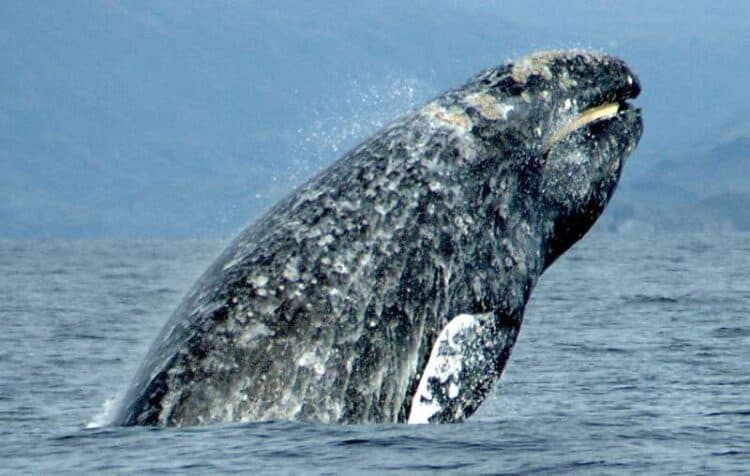The world’s top carnivores are in big trouble: this is the take-away message from a new review paper published today in Science. Looking at 31 large-bodied carnivore species (i.e those over 15 kilograms or 33 pounds), the researchers found that 77 percent are in decline and more than half have seen their historical ranges decline by over 50 percent. In fact, the major study comes just days after new research found that the genetically-unique West African lion is down to just 250 breeding adults.
“Globally, we are losing our large carnivores,” says lead author of the study, William Ripple, with Oregon State University. “Many of them are endangered. Their ranges are collapsing. Many of these animals are at risk of extinction, either locally or globally. And, ironically, they are vanishing just as we are learning about their important ecological effects.”
The story of the world’s large carnivores is a largely bleak one. In the not so distant past, most people—even scientists—largely viewed large carnivores as competitors, pests, and deadly threats. Such views led to conflict and even extermination campaigns that killed-off many of the world’s top predators in Europe, North America, the Middle East, and North Africa, and decimated populations elsewhere. In fact, the study finds that 66 percent of the 31 biggest carnivores are currently listed as threatened on the IUCN Red List.

“These carnivores often require large prey and expansive habitats,” write the scientists. “It is these food requirements and wide-ranging behavior that often bring them into conflict with humans and livestock. This, in addition to human intolerance, renders them vulnerable to extinction.”
In many parts of the world, top predators are still shot, trapped, poisoned, or even speared. Even where they are not directly targeted, big predators are rapidly losing both their habitat and their prey base, leading to a trend of vanishing top predators even in protected areas.
According to the study, the major trend underpinning this global decline in big predators is the rapidly-rising population of another predator: humans.
“An increasing human population and subsequent rate of urbanization inevitably means many habitats will be further reduced or modified. This will place top predators at increased risk of extinction,” co-author Euan Ritchie with Deakin University in Australia told mongabay.com., adding that “the issue of an increasing human population poses challenges well beyond just maintaining top predators in the environment. How we are going to produce enough food while still maintaining the biodiversity we are so dependent upon is arguably society’s greatest challenge.”
However, even as most big-bodied predators continue to decline, popular views of these megafauna are slowly shifting. Large-bodied predators now have many conservation champions, and elucidate passionate responses from advocates. These animals are also often seen as key symbols for global conservation efforts, and in some parts of the world (notably the U.S. and Europe) a few big predators are staging mini-comebacks. But perhaps, more importantly, scientists are just beginning to understand the outsized role of big carnivores in the world’s ecosystems.

“There is now overwhelming evidence from around the world that we are better off with top predators in the environment because of the many important roles they perform, such as reducing overgrazing of vegetation by herbivores which increases the carbon sequestration capabilities of habitats and in turn assists with ameliorating the impacts of climate change,” says Ritchie.
In fact, scientists have long theorized that big predators exert a powerful ecological influence on the foodchain by keeping herbivore populations low, but now they are discovering additional avenues in which big carnivores impact ecosystems. For one thing, top predators also keep mesopredators (medium-sized predators) in check via harassment, intimidation, and sometimes downright killing. Losing big predators can mean a sudden explosion of mesopredator abundance, impacting species all down the line. For example, Australia has built a massive fence that keeps the dingoes (Canis lupus dingo) out of sheep grazing areas. However, in these same areas, red fox—an invasive predator—runs amuck, leading to increased pressure on native mammals.
“Overall, the suppression of dingoes has probably contributed to the endangerment and extinction of small marsupials and rodents over much of the continent,” the scientists write.
The unmistakable importance of predators is not regulated to the land alone. Research has shown that sea otters (Enhydra lutris) exert a huge influence on their environment by keeping urchin populations in control. When sea otters are killed off, sea urchin populations explode, decimating kelp forests. The researchers write that sea otters “[enhance] the abundance and distribution of kelp and other fleshy macroalgae in coastal inshore ecosystems.”

Probably the most famous example of the importance of top predators comes from Yellowstone National Park. The reintroduction of wolves into the park in the 1990s has had massive impacts on the ecosystem. With the return of the wolves, elk behavior changed significantly: instead of browsing out in the open, they took to the forests for protection. This allowed trees to grow unimpeded in many parts of the park where they had been overgrazed for decades, including along river and stream beds. The impacts spread to songbirds, beavers, fish, overall biodiversity and even carbon sequestration. In a roundabout way, wolves became the true aborists of Yellowstone.

The American black bear is the world’s only bear species whose population is on the rise. Photo by: Public Domain. “I am impressed with how resilient the Yellowstone ecosystem is. It isn’t happening quickly everywhere, but in some places, ecosystem restoration has started there,” says Ripple. “Nature is highly interconnected. The work at Yellowstone and other places shows how one species affects another and another through different pathways. It’s humbling as a scientist to see the interconnectedness of nature.”
Given this changing understanding of predator importance, Ritchie says many of the world’s governments are woefully mismanaging their predator populations.

“In the case of wolves in North America and dingoes in Australia, their lethal control often fractures social structures leading to more not less wolves and dingoes and often increased not decreased attacks on livestock,” says Ritchie, who argues that policies of culling predators “potentially [exacerbate]” human conflict with predators” and undercut ecosystem services.
“Governments should instead promote policies and actions such as using guardian animals for protecting livestock, as this will lead to improved and sustained environmental and economic outcomes,” he adds.
But how many predators are needed to fulfill their ecological role? In many cases, scientists aren’t wholly certain, but Ritchie says the answer is actually more complex than a simple number.
“It’s not just how many predators there are but the age and sex of individuals is important. When predator populations are greatly reduced and interfered with through lethal control, relationships between individuals breakdown and predators can behave in unexpected and sometimes very negative ways,” he notes. In many predatory species, infants and adolescents learn from older individuals. When mature individuals are killed-off, young predators are left without their mentors, often leading to more erratic behavior and posing a higher risk both to livestock and people.
Despite growing knowledge about the importance of top predators, the ecological role of most of the world’s large-bodied predators remains unknown. Perhaps more alarming still, scientists lack good data on the population sizes of many of the world’s top predators, leaving conservationists guessing. But where information is available: it is disheartening. Lion populations have fallen from an estimated 100,000 in 1960 to 15,000-35,000 today. There are currently more captive tigers in the U.S. alone than there are tigers in the wild worldwide (about 3,200). The Ethiopian wolf (Canis simensis) has lost 98 percent of its historical range and sports a total population of less than 500.
Not all the news is bleak: wolves are returning to long-lost habitats in the U.S. and Western Europe, conservationists have launched a massive campaign to double tiger numbers in the wild by 2022, and the world’s rarest big predator—the red wolf (Canis rufus)—is bouncing back after once being thought totally extinct. However, the bad news—and the relentless pressures—very much outweighs the good for the world’s big predators.
“Promoting tolerance and coexistence with large carnivores is a crucial societal challenge that will ultimately determine the fate of Earth’s largest carnivores and all that depends upon them, including humans,” the scientists conclude.



Citations:
- W.J. Ripple, R.L. Beschta, M.P. Nelson, et al. Status and Ecological Effects of the World’s Largest Carnivores. Science (2014) Vol 334.
This article was written by Jeremy Hance for Mongabay.com







Leave a Reply